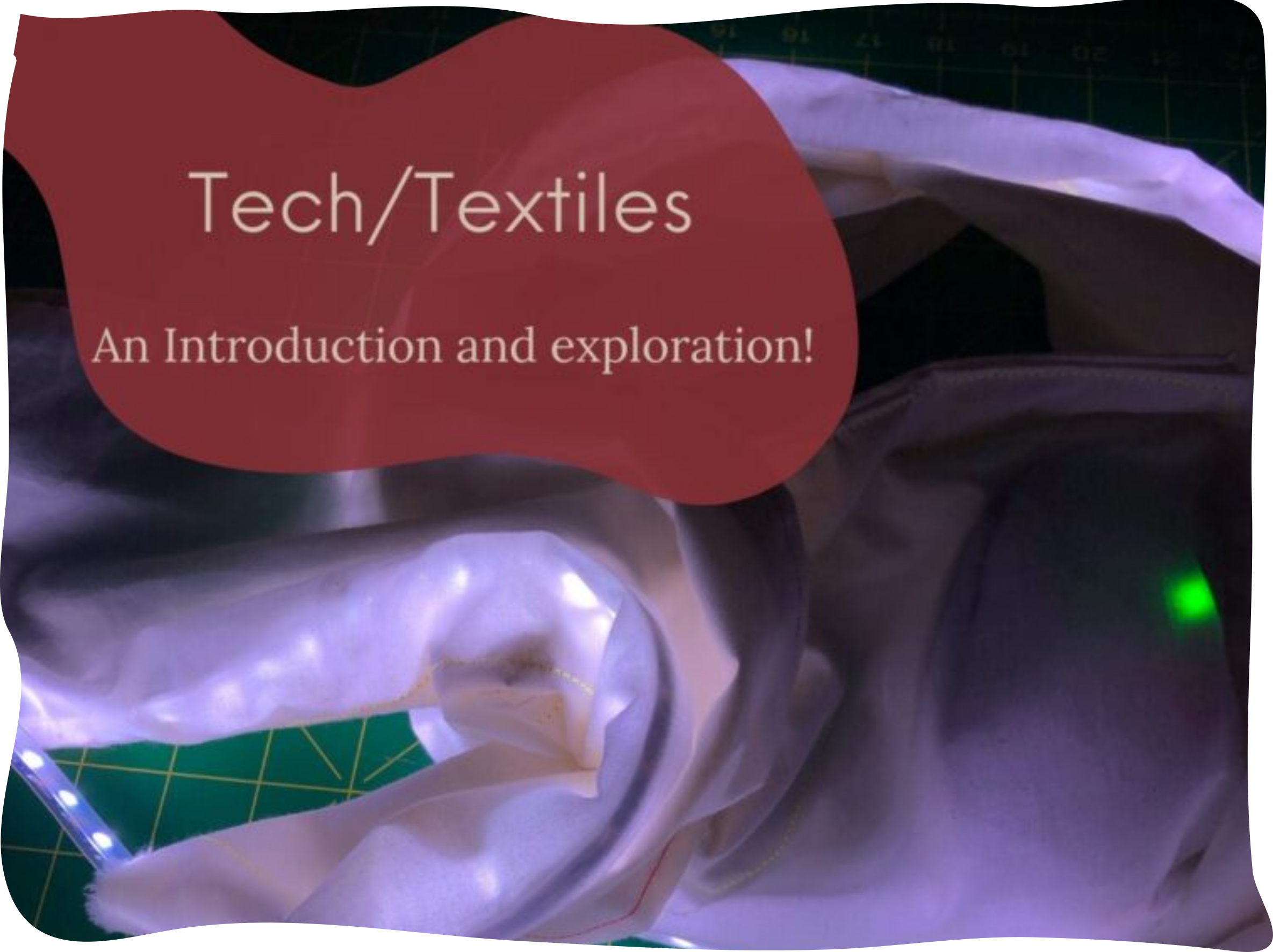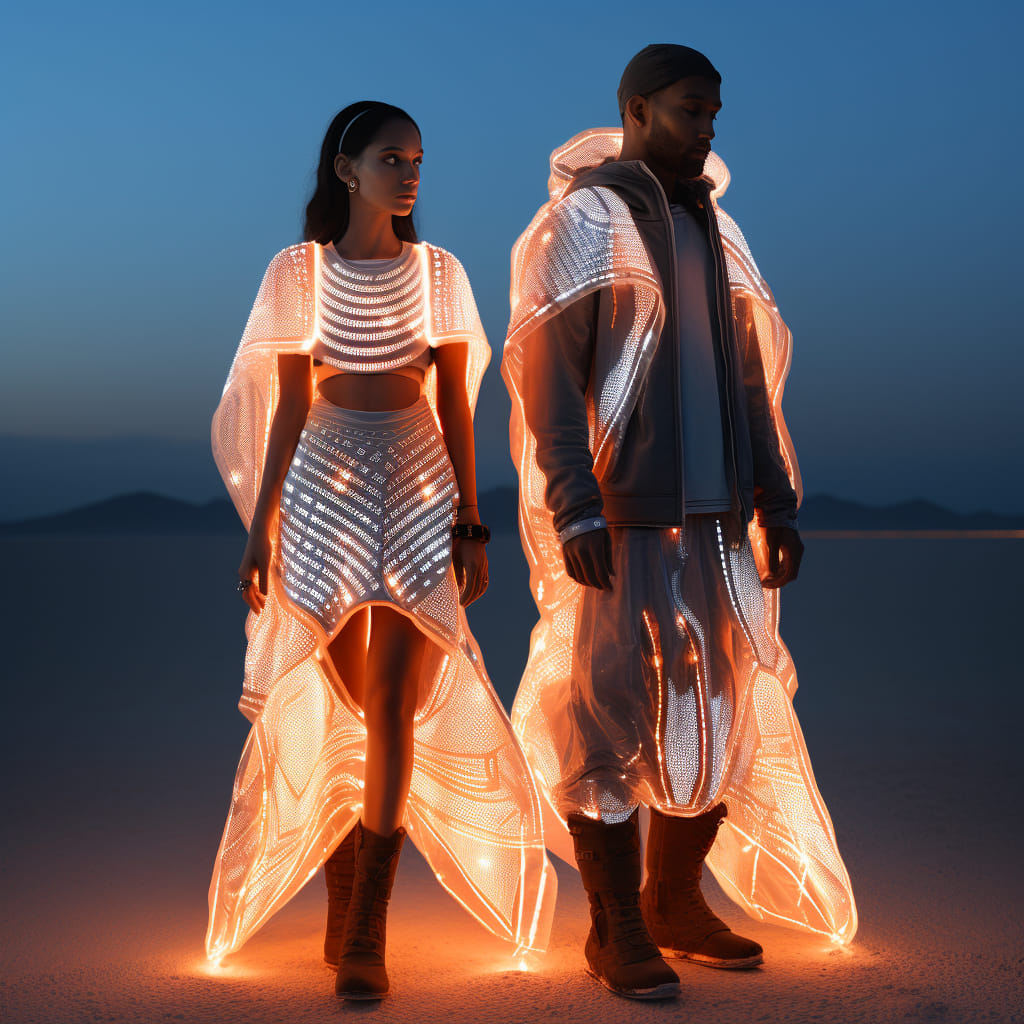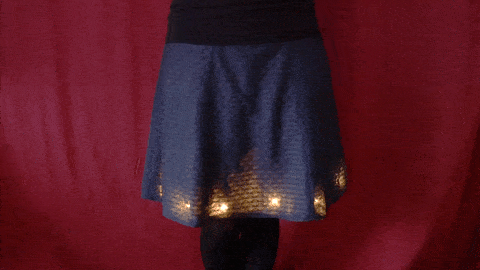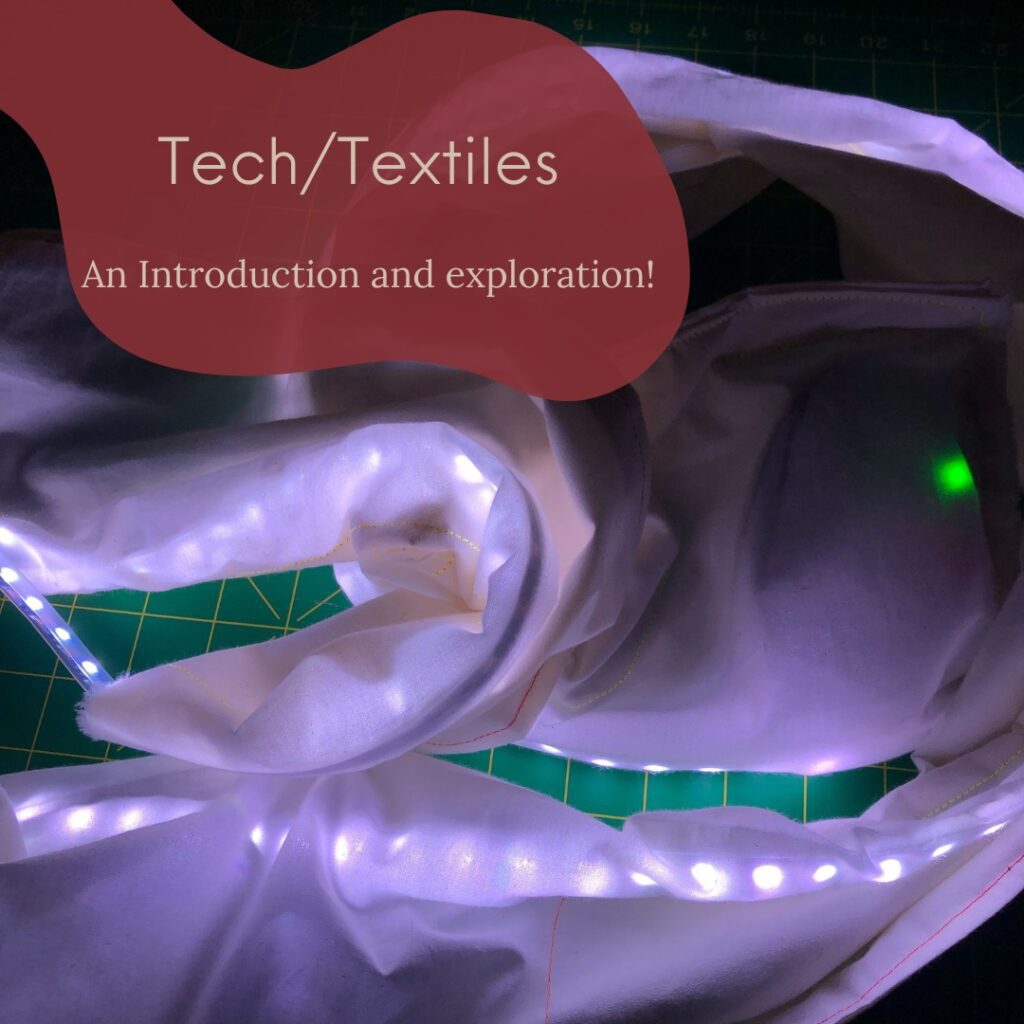
The Electric-Textiles Workshop was designed to invite more women into the local makerspace community, addressing the gender gap in maker culture. By combining traditional sewing with wearable electronics, the workshop provided a welcoming entry point into electronics, coding, and soldering. Partnering with Nicole Bertram from The Spool1 and The MakeItZone2, this four-session workshop guided participants through creating an interactive, light-up scarf, empowering them with new technical skills and confidence in makerspace environments.
Collaborator: Nicole Bertram
Project Timeline: Nov – Mar 2024
Problem
Makerspaces are disproportionately dominated by white men and that lack of diversity comes at a cost to everyone involved. Makerspaces are a beautiful third space of discovery and exploration, and the diversity of people, practices, and crafts allow for idea spillover and divergent thoughts to occur. The power of a third space truly comes from its diversity and a lack of representation needs to be addressed for any makerspace to realize its potential.
I was first deeply inspired by the Tools for Change Residency3 at MakerLabs4 in Vancouver. This program started in 2018 by my colleague, Hanna Benihoud, when I was working at MakerLabs. She noticed that of our 150+ members, less than 20% were women. She proposed and developed a residency program and within a year, membership of those not identifying as men increased to over 30%.
In 2023, I went to the Inclusive Makerspace Conference5 hosted by the University of British Columbia’s Master of Educational Technology Program6. The keynote speaker, Dr. Maggie Melo, shared her research which explored why marginalized people are not engaging in makerspaces and strategies to create a more inviting environment.
Having recently joined a new community and its makerspace, The MakeItZone, I noticed a lack of engagement from individuals who do not identify as men.
Electronic Textiles as a Solution
Electronic textiles, or e-textiles, wearable electronics, or wearable tech, is the integration of electronics in clothing. This is often done with lights and can incorporate sensors. E-textiles bridge the traditionally male-dominated field of electronics with textiles, a craft historically associated with women. These crafts are not inherently tied to any gender; however, there remains an unfortunate association between gender and those who practice them. I believe e-textiles can serve as a bridge to challenge and redefine these roles.
Makerspaces, like any new environment, can feel intimidating until you engage with them. Once people complete a project in a makerspace, they become more comfortable—not only because they can envision themselves there, but because they have already experienced being part of the space.
Action
To bring this idea to life, I needed to take the following actions:
- Partner with a sewing instructor
- Book space in the MakeItZone
- Develop a prototype and curriculum
- Market + teach the class
I am not confident enough in my skills to teach sewing nor did the MakeItZone have the necessary equipment to support a whole class. I was fortunate to have a friend introduce me to Nicole Bertram who owns The Spool, “a sewing studio and store that seeks to make slow fashion inclusive, caring and fun!” She was very interested in collaborating on an e-textiles workshop.
The MakeItZone Was also very supportive and offered the tools and space to conduct the workshop.
Together, Nicole and I’s next task is to develop a prototype and curriculum. I took on all parts of the electronics and code while Nicole addressed the sewing and fabric. We shared some examples of what we could make.
We decided to make a scarf as the prototype and develop the curriculum around it. A scarf is a simple project, making it easy to incorporate electronics. This ensures the course remains both skill- and cost-accessible.
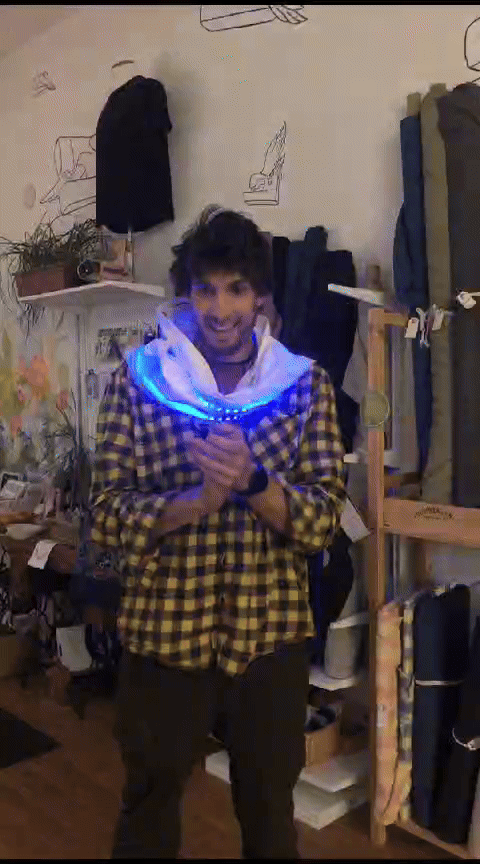
We then designed a four evening session workshop and a materials kit:
- Day 1 @ The Spool Sewing Studio: Intro to course + basic sewing
- Day 2 @ The Make It Zone: Place hardware & Soldering
- Day 3 @ The Spool Sewing Studio: Sewing the pieces in
- Day 4 @ The Make It Zone: Coding
Course Description
Nicole + Adrian @ The Spool Sewing Studio + The MakeItZone
Welcome to an extraordinary adventure that merges the worlds of sewing and electronics to craft stunning wearable innovations!
Are you someone who’s always been captivated by the blend of fashion and technology? Have you ever wanted to make garments that not only look amazing but also light up, react, and amaze? Look no further. This course is your starting point, tailored for absolute beginners with no previous knowledge of electronics.
Course Highlights:
- Sewing Essentials: Learn to craft with fabric, from the basics to hands-on projects.
- Electronics Demystified: Explore electronic components and their magic, no prior knowledge needed.
- Introduction to Coding: Dip your toes into programming to make your creations come alive.
- Design and Complete: Bring your ideas to life by designing and finishing your own wearable project.
Whether you’re dreaming of runway-worthy fashion, accessories that enchant with their illumination, or breakthroughs that redefine what’s possible, this course empowers you to transform your visions into tangible, wearable marvels.
No prerequisites, no previous expertise needed. Just bring your curiosity, your eagerness to learn, and your passion for blending creativity with technology. Join us in the captivating journey of E-textiles, where electronics meet fashion; your entry into the world of wearable electronics begins now!
Workshop Kit
- 2 m of fabric
- Microcontroller – Raspberry Pi Pico
- 2.5 m of WS2812B RGB addressable LED strip (60 LEDS/M)
- 5000 mAhUSB battery bank
- Push button
- Sound sensor (MAX4466 Electret Microphone Amplifier Module) or accelerometer (MPU-6050 3 Axis Accelerometer Gyroscope Module)
Electronics Workshop Content
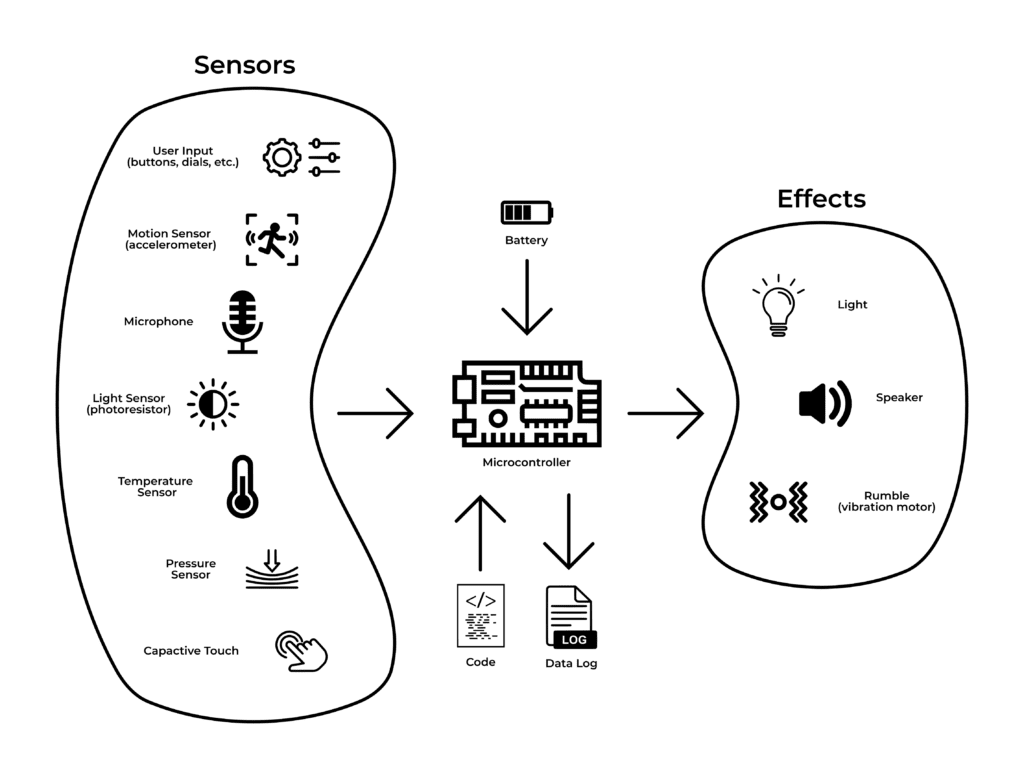
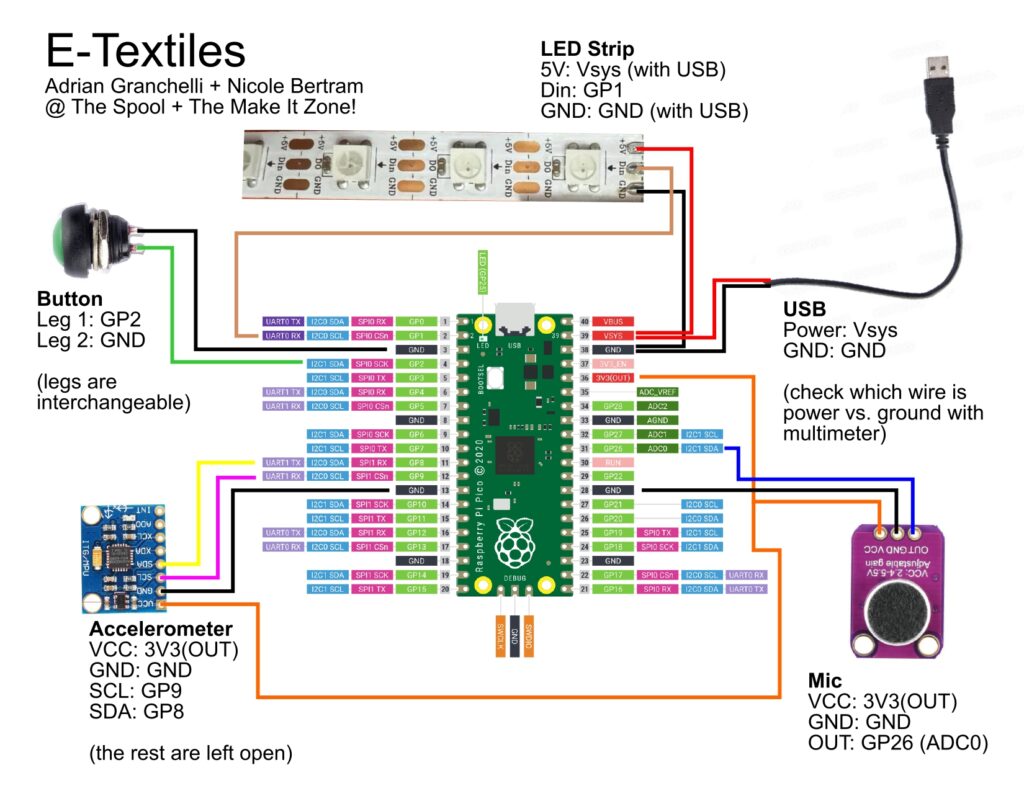
The electrical parts we are using fall into two categories: electronic effects (these are like things that show results, like blinking lights or sounds we can hear) and electronic sensors (these are like things that can sense what’s happening around them, like light or temperature).
The little brain for these electrical things is called a “microcontroller.” This microcontroller can make the electronic effects do their cool stuff, like making lights shine or sounds play in a certain pattern or way. It can also pay attention to the electronic sensors and change what the electrical things do based on what the sensors sense from the world around them. So, this microcontroller can control the cool effects and use the sensors to make the electrical things react in different ways.
With the Raspberry Pi Pico running Circuit Python, a file explorer window can access the microcontroller directly. Pre-made code with basic functionality was shared with students.
Results
Three women enrolled in our workshop, all with long standing curiosities for e-textiles. They all sewed and had personal or professional projects they wanted to incorporate electronics into. None of these women have soldered, used microcontrollers, coded, or utilized the MakeItZone before our workshop.
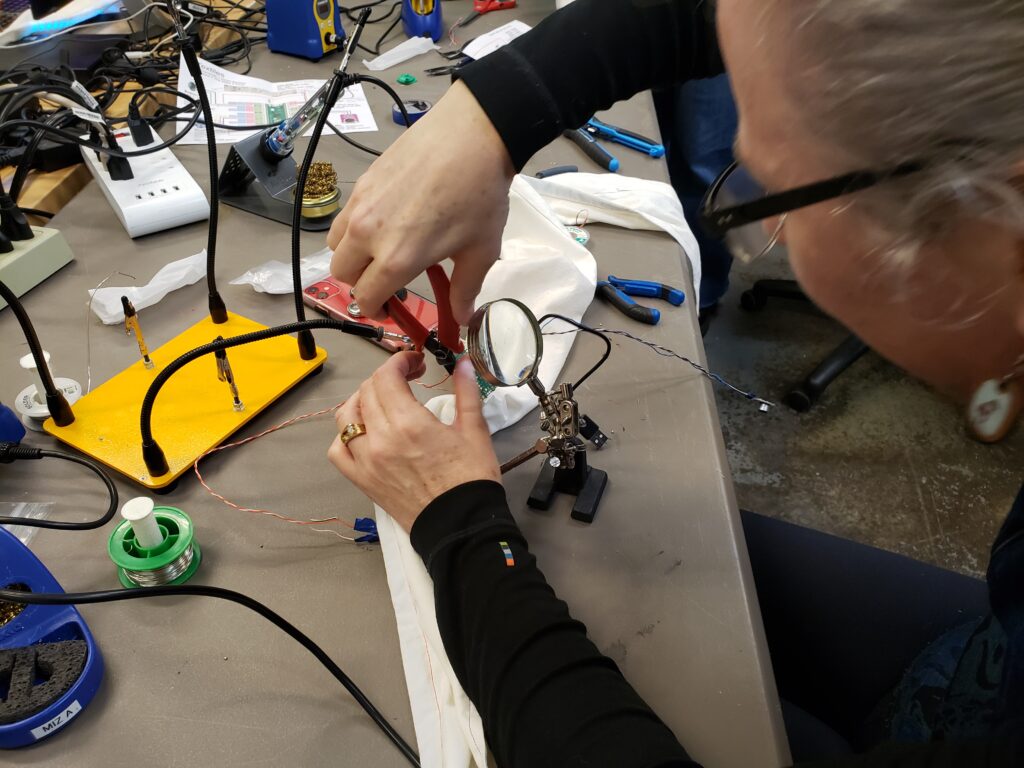
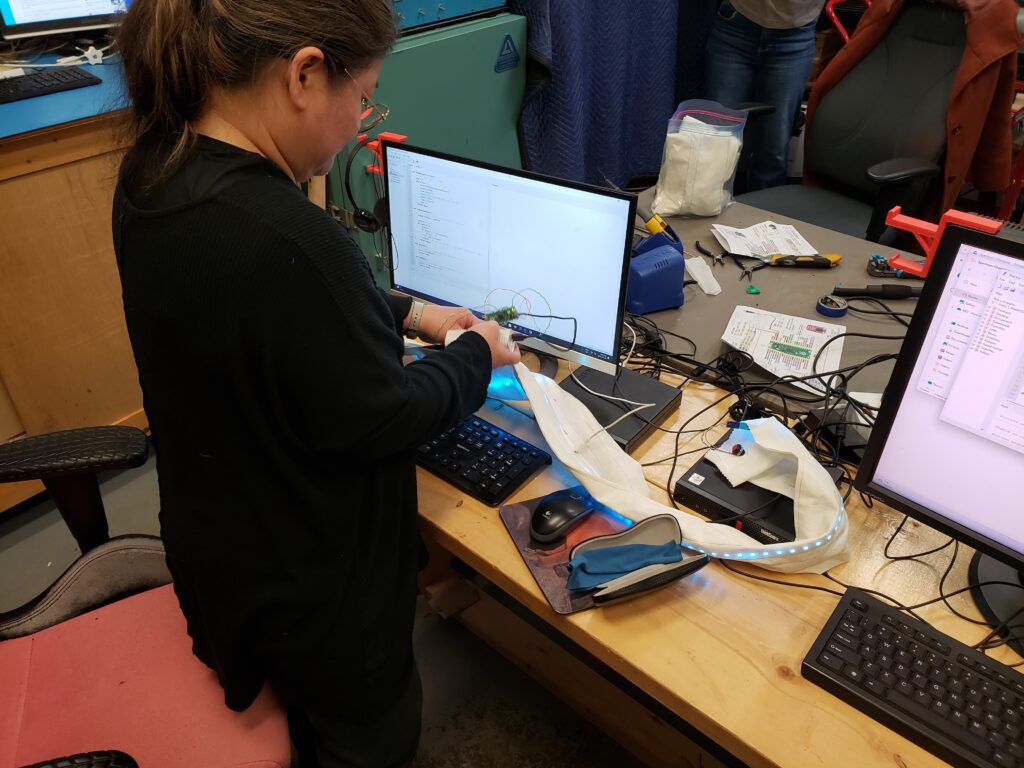
This E-textiles scarf project turned out to be very ambitious to involve sewing, soldering, and coding content in only four evening sessions, yet all students successfully completed the project. Soldering was a crowd favourite while coding was a challenge – all the students successfully used a helper code to determine the exact number of LEDs, and were able to set up the pre-made code based on their configurations. Only one student took the time to explore personalized lighting patterns.
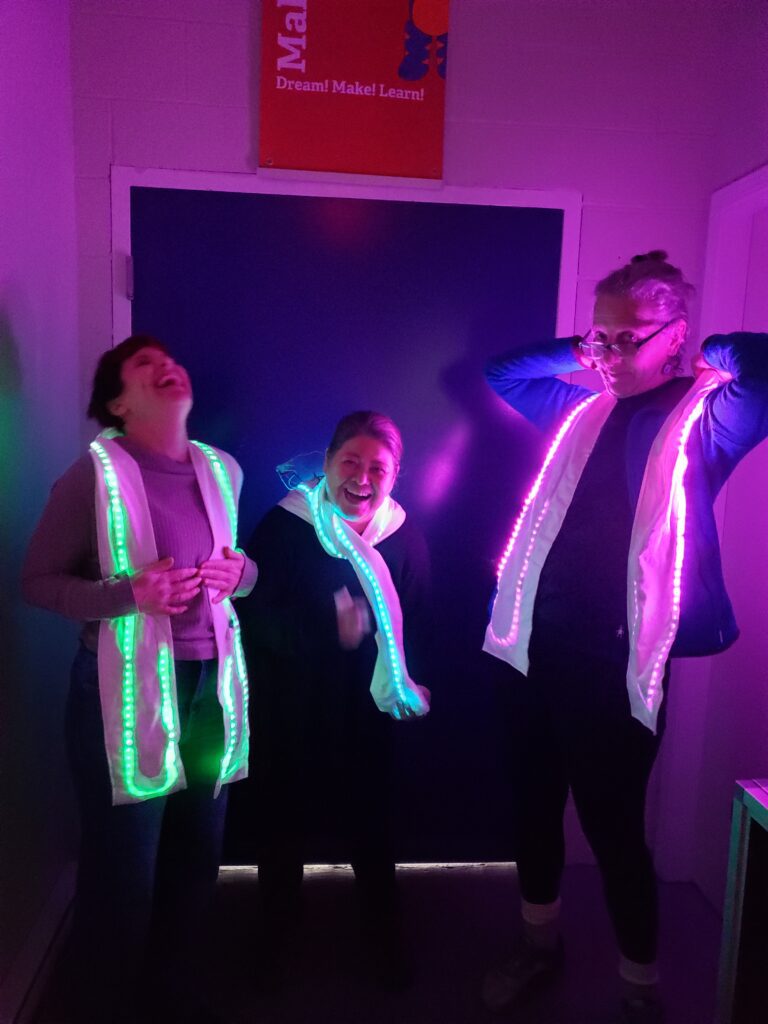
Learnings
Hands-on, project-based learning can be a powerful gateway into makerspaces. This workshop demonstrated that giving participants a tangible project with personal relevance can lower the barriers to entry into makerspaces. By connecting an existing skill (sewing) with new technical skills (soldering, coding), we created an inviting and engaging learning experience.
- Community Partnerships Strengthen Outreach
Collaborating with The Spool and The MakeItZone created an accessible learning environment by leveraging each space’s strengths—sewing expertise and maker tools. Having familiar, welcoming spaces with established communities helped ease participants into a new environment. - Hands-On Exploration Builds Confidence
Participants overcame hesitation in soldering and coding through guided practice and open-ended exploration. Soldering, in particular, is an easy to pick up skill—especially for those with sewing experience and fine dexterity—showing that lowering barriers and making skills approachable builds confidence and sparks curiosity. - Time Constraints Limit Depth of Learning
Covering sewing, soldering, and coding in four sessions was ambitious. While all participants completed their projects, deeper exploration—particularly in coding—was limited. Resources between classes as well as follow-up materials were shared with learners but engagement was low.
The workshop successfully brought in women who were curious about makerspaces but had never engaged before. Seeing others like themselves participate reinforced a sense of belonging. This highlights the importance of explicitly inviting underrepresented groups and designing workshops with them in mind.
Actionable
Using a project-based approach with familiar elements can encourage diverse participation in makerspaces. The success of this workshop suggests that bridging traditional crafts with emerging technologies is an effective way to introduce underrepresented groups to makerspaces. Below are key strategies that can be applied to future initiatives.
- Bridging Traditional and Emerging Skills Works
E-textiles successfully connected sewing (a familiar, accessible skill) with electronics and coding (often perceived as intimidating). This approach helped participants feel more comfortable engaging with technology and provided a natural entry point into makerspaces. - Modular Learning Increases Accessibility
Breaking the workshop into distinct phases—sewing, electronics, and coding—allowed participants to engage at their own pace. Future workshops could explore a more modular format, where learners can choose to focus more deeply on areas of interest. - Pre-Made Code Supports Learning, But More Customization is Needed
Providing pre-written code allowed participants to complete their projects without getting stuck on programming syntax. However, only one participant explored personalizing their lighting patterns. Future workshops could integrate more structured coding exercises to encourage creative experimentation. - Creating Open Makerspace Opportunities
Workshops introduce new learners to the space, but additional low-barrier opportunities (such as open lab nights or community meetups) can help sustain engagement beyond a single course. Encouraging ongoing participation is key to long-term inclusion. - Intentional Outreach Expands Participation
Women attended this workshop because it was explicitly marketed to them. Makerspaces should actively promote events designed for underrepresented groups and highlight welcoming, inclusive learning opportunities.
Footnotes
- The Spool, a sewing studio and store that seeks to make slow fashion inclusive, caring and fun! https://thespoolsewingstudio.com/
- MakeItZone. The place to make your dreams real, and to learn by doing. A safe and welcoming space for people with different skill sets and interests to meet, learn, and work on their projects. https://makeit.zone/
- The Tools for Change residency focuses on empowering women and people of diverse genders to use the tools at MakerLabs in a comfortable and supportive environment to make almost anything. https://www.makerlabs.com/toolsforchange
- MakerLabs provides you with the tools, space, and skills to make almost anything. https://www.makerlabs.com/
- Inclusive Makerspace Conference. https://met.ubc.ca/20years/events-activities/inclusive-makerspace-conference/
- Master of Educational Technology. University of British Columbia. https://met.ubc.ca/
- Melo, M. (2023). Space invaders: First-time users feel like trespassers in the makerspace [Conference presentation]. MET Inclusive Makerspace Conference, University of British Columbia’s Master of Educational Technology Program. https://www.youtube.com/watch?v=EVNfXqZMYJk
- Neopixel LED Skirt by maketvee. https://ca.pinterest.com/pin/480055641549372831/
- Neopixel LED Skirt by maketvee. https://www.instructables.com/Neopixel-LED-Skirt-motion-Triggered/
